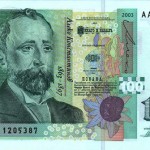Copper traded mostly lower during Asian trading but rose to positive territory in the European session as market players weighed the possibility of Fed tapering its bond purchasing program in September against prospects for increased demand amid stabilizing economic activity in its main consumers from U.S. to China.
On the Comex division of the New York Mercantile Exchange, copper futures for delivery in September traded at $3.323 a pound at 8:47 GMT, up 0.17% on the day. Prices held in range between $3.330 and $3.295 a pound respectively. The metal rose 0.01% on Tuesday, a sixth consecutive daily gain, extending current weeks advance to 0.4% after adding 6.5% in the preceding two weeks.
Copper drew support on Tuesday amid upbeat economic data from the Euro zone and a fourth consecutive monthly advance in U.S. retail sales. The single currency bloc is the third biggest consumer of the metal, whose prices tend to surge amid improving economic activity as it is widely used in the industrial production. The ZEW Centre for Economic Research reported that Germany’s ZEW Economic Sentiment rose to a five-month high of 42.0, surpassing analysts’ expectations for a jump to 39.3 from July’s 36.3 reading. ZEW also said that the leading EU nation’s ZEW Current Situation index rose to 18.3 in August, well above projections for a rise to 12.0 from July’s 10.6.
Meanwhile, the institute also reported that the Euro zone’s economic sentiment jumped to 44.0 in August, the strongest level since April 2010, exceeding expectations for a rise to 37.4 from July’s 32.8 figure.
The Euro zone’s Industrial Production also surprised positively and marked an advance both on monthly and annual basis. Year-on-year, the bloc’s industrial activity in June met the anticipated 0.3% growth pace, which marked a major improvement compared to the preceding period’s 1.3% contraction. Month-on-month, the Industrial Production expanded by 0.7%, up from May’s upward revised contraction of 0.2%, but slightly below forecasts for a 0.9% rise.
Data is expected to show on Wednesday that the Euro zones economy has expanded in the second quarter, following a contraction in the first three months of the year. The single currency blocks Advance Gross Domestic Product is expected to have risen by 0.2% in Q2, compared to a downward revised contraction of 0.3% in the months January-March. Year-on-year, economic growth is projected to have declined by 0.8%, outperforming the preceding period’s 1.1% contraction.
Meanwhile, U.S. July industrial production due at Thursday is projected to have surged 0.3%, marking the same advance as in June. Both of Friday’s Building Permits and Housing Starts are projected to have also advanced last month.
Apart from the demand side, dollar-priced commodities have largely been tracking shifting expectations for when Fed will begin winding down its monetary easing program as an exit from the stimulus will boost the dollar and reduce the need to invest in raw materials as a hedge strategy.
According to a Bloomberg survey this month, 65% of the polled economists expect Fed to begin deceleration its bond purchasing program after FOMC’s September meeting, compared to 50% in July. First wave of cuts should be of $10 billion, analysts said.





